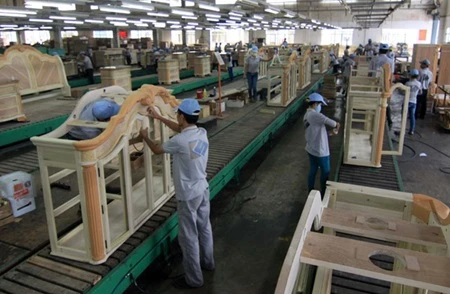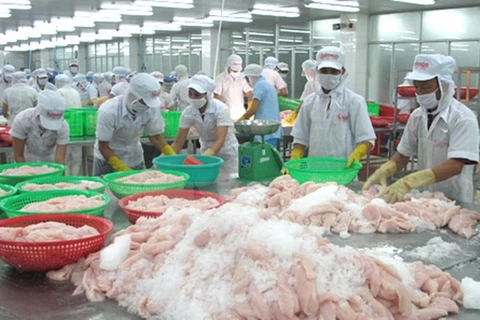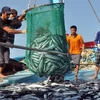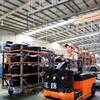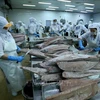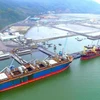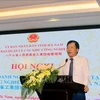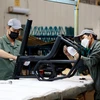 Footwear production line of Dong Hung Industrial JSC at Tan Dong Hiep A Industrial Park in southern Binh Duong province. (Photo: VNA)
Footwear production line of Dong Hung Industrial JSC at Tan Dong Hiep A Industrial Park in southern Binh Duong province. (Photo: VNA) Hanoi (VNA) – Domestic footwear producers must brace themselves for a bumpy ride ahead in the face of stiffer competition as they lag behind their regional rivals in terms of technology.
Vietnam’s footwear products are shipped to around 50 countries worldwide, with the largest buyers including the US, Japan and the EU.
Footwear exports rose sharply from 8.5 billion USD in 2013 to 12.07 billion USD last year, but this does not necessarily indicate a bright future for the country’s footwear firms.
According to chairman of the Thai Binh Shoes Group Nguyen Duc Thuan, local footwear manufacturers are under great pressure to replace their outdated methods with more advanced technology if they want to survive fierce competition.
The local footwear industry has been developing for two decades, but with little technological advancement in production compared to the robust development of global footwear technology, Thuan said.
Businesses need to innovate and adopt new manufacturing technologies alongside a long-term strategic vision for at least the next 10 years to ease competitive pressure, he stressed.
Another problem comes from local productivity which is still far below those of regional rivals. Low productivity did not only affect the industry’s competitive position but also led to low incomes.
If productivity does not improve, local producers will end up losing orders to competitors from overseas and at home, Thuan added.
Statistics from the Ministry of Industry and Trade showed that Vietnam produced approximately 1.1 billion pairs of shoes in 2015, 72.2 percent of which were made by foreign direct investment (FDI) firms.
FDI firms also accounted for 79 percent of footwear exports last year, making the disparity between FDI and domestic makers even wider.
Furthermore, more pressure will be added from regional businesses, such as Thailand, Cambodia, Myanmar, Indonesia and the Philippines, since the ASEAN Economic Community was officially formed last year, allowing free cross-border movement of goods, capital and human resources.-VNA
